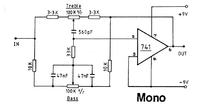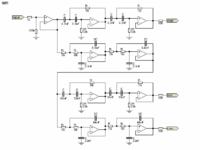slnuwan
Junior Member level 1

- Joined
- Mar 10, 2012
- Messages
- 19
- Helped
- 0
- Reputation
- 0
- Reaction score
- 0
- Trophy points
- 1,281
- Activity points
- 1,414
Hi All,
I wanted to make a high power 2.1 audio amplifier which gives 100W+100W+200W.
Then I ordered 200W class-D power amplifier and 100W+100W class-D power amplifier via online store.
I thought it can be connected to my old 2.1 sub woofer pre-amp.
But unfortunately it could not be connected as preamp out is not mach with power amplifiers and audio is destroyed.
Someone please tell me, are there any specific preamplifier for class-D power amps?
Can you kindly share a high quality 2.1 pre amplifier please?
And 200w class-D amplifier dissipate high heat even though there is a heat shrink , Please tell me a solution for this also.
Thanks,
Nuwan.
I wanted to make a high power 2.1 audio amplifier which gives 100W+100W+200W.
Then I ordered 200W class-D power amplifier and 100W+100W class-D power amplifier via online store.
I thought it can be connected to my old 2.1 sub woofer pre-amp.
But unfortunately it could not be connected as preamp out is not mach with power amplifiers and audio is destroyed.
Someone please tell me, are there any specific preamplifier for class-D power amps?
Can you kindly share a high quality 2.1 pre amplifier please?
And 200w class-D amplifier dissipate high heat even though there is a heat shrink , Please tell me a solution for this also.
Thanks,
Nuwan.





